Two smart luggage companies have closed their doors in the last four weeks, BlueSmart and Raden. But are the technology restrictions airlines have introduced to blame, or is there something else afoot?
If you are considering booking travel or signing up for a new credit card please click here. Both support LiveAndLetsFly.com.
If you haven’t followed us on Facebook or Instagram, add us today.
Airlines Have All But Banned Smart Luggage
Early in 2018, in what was perhaps the most united stance the US-based carriers have taken, airlines announced the banned smart luggage without removable batteries. In truth, the carriers did not actually ban the bags themselves, but rather, the battery powering the device had to be removed to avoid potential fires from the batteries either gate checked (in the cargo hold) or up above in the overhead bins. This move echoes the carriers’ approach to checked bags for some time but was clarified for smart bags.
I noted in a review of the Raden case some time ago that the lithium-ion battery was removable but it was a pain to do. At that time, travelers were required to open the fabric liner inside the suitcase and physically remove the brick-sized battery. You’d then need to store it in your personal bag carried onto the plane.

Three companies were leaders in the Smart Luggage space, BlueSmart, Away Travel, and Raden. BlueSmart was the original and they raised millions on crowdfunding sites Kickstarter and Indiegogo before building a more mature brand away from the single product on Kickstarter. They were the first million-dollar crowdfunding project on Kickstarter. Away was formed by former Warby Parker executives, and built an attractive line of simple smart suitcases of a variety of sizes. Raden was similar to Away and had one key feature that Away didn’t, Raden bags were incredibly durable.
Raden and BlueSmart Go Under
I was disappointed to hear the news this week that Raden had closed their doors. While BlueSmart had shut down a couple of weeks ago, I wasn’t as disappointed with their departure. Raden had reached out to me some time ago and offered me the chance to try their product, Away did the same. But Raden’s was far superior and better priced than either Away or BlueSmart.
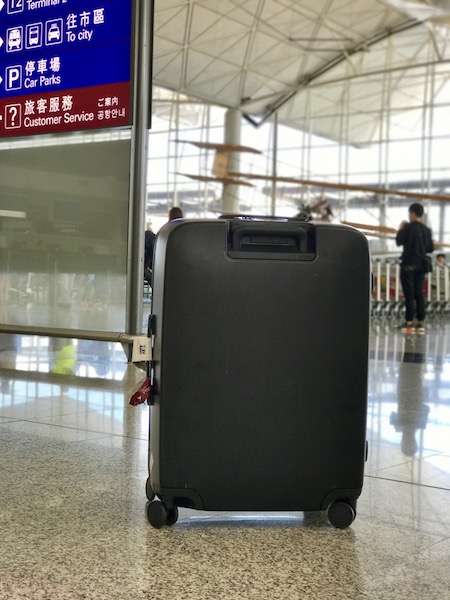
BlueSmart stated the airline restrictions as the reason for their demise, Raden did as well, I don’t believe this is truly the case for the reasons I am about to indicate. BlueSmart has sold their assets to Travelpro, Raden simply closed their doors entirely.
The Airlines Are Being Blamed, But They Shouldn’t Be
When comparing Raden vs Away vs Bluesmart, the differences can be profound. Unfortunately, Raden is no longer in business and despite owning a Raden, the Raden app and Raden’s website are no longer functional.
BlueSmart’s product was innovative at first, then replicated. While their bags were stylish, they weren’t $450-600/each stylish in my opinion. BlueSmart had recently come out with a new line and advertised that there was a backorder on their first run, however, they hadn’t adapted their product to make the battery easy to remove. For BlueSmart perhaps that was the case, if you can’t remove the battery you won’t be buying a new carry-on you can’t use. But their price point was also a problem. They were two to three times the cost of comparable products and found themselves competing with the mid-level ranges of Tumi and Rimowa rather than other smart case competitors – a doomed business plan from the start.
Raden, however, had adapted to a removable battery much like the Away carry-on currently on the market. A simple push-button on the top of the case ejects the lithium battery which is more or less a spare lithium-ion charger like most people carry as a backup. The products in this regard were identical. As logic would suggest if two products are the same and both operate in the same environment if one fails they both fail. And that’s the story that Raden and BlueSmart are telling, but it’s not entirely true, Away Travel is proof of this.
How Did Away Succeed When Others Failed?
When I reviewed the Away carry-on, I noted that it wasn’t as durable as the Raden case. When compared to one another, the Away bag was simply more stylish generally. They both came in beautiful boxes, each with a cloth protective case, yet something about the Away case felt more premium. They included more personal touches, a postcard inside with a personalized message, and the website was better than either of the leading competitors. Each piece (Raden’s checked luggage – A28, and Away’s carry-on bag) charge your phone through the USB port accessible from the outside of the case.
Away’s marketing is hands down better, but two other reasons have helped them to avoid the fate of their smart luggage competitors (at least for now). The first was the adaptability of the brand which extends beyond making the battery removable (which Raden did) to other products they have developed in conjunction with their bags. They now sell Dopp kits, garment bags, weekend bags and have expanded beyond simple composite plastic to also include textiles and aluminum.
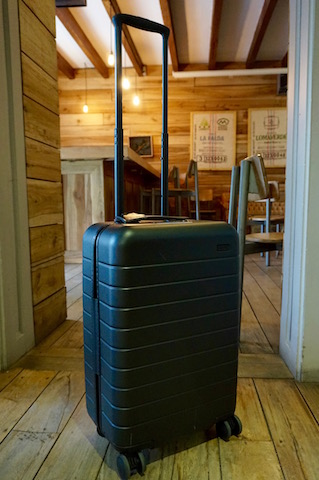
More than anything else, the smart luggage startup Away Travel has really captivated the culture around their product, their target market and the space in which they operate. They focused on working with influencers, bloggers, and celebrities. Away communicates to a younger generation in a way that I believe Tumi, Rimowa, and Briggs & Riley have struggled. They offer “Here” magazine, and the “Airplane Mode” podcast both with stories that cater to their market. The website and magazine both look like travel Instagram accounts.
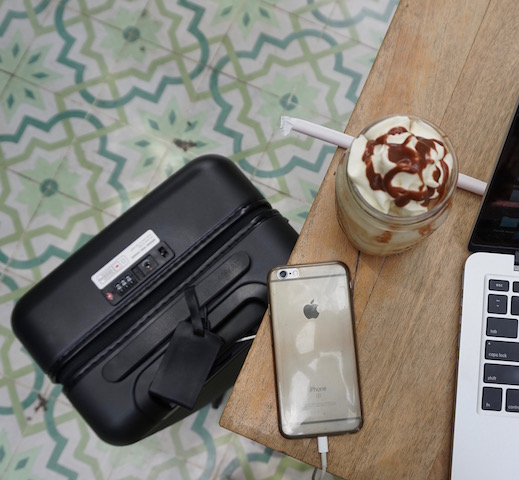
Is It Just A Matter Of Time Before Away Fails Too?
I really don’t think so. They have diversified their offering, their sales mix isn’t solely dependent on smart luggage by developing add-on items. Ultimately, Away made the right moves at the right time, and given the failure of their two biggest competitors, I can’t imagine they will struggle in the same way their competitors have.
I also believe that the brand is more powerful than the product line. Raden’s case was more durable but it wasn’t really about the case, it was about the brand reputation. That’s where Away needs to build further to grow their business. Perhaps Away will come out with a subgroup of branded Airbnb Away properties to re-create their Instagramable experiences – who knows – but one thing is clear, they need to further explore their travel savvy rather than try to create the next killer app (or bag).

For what it’s worth, while I like (and may soon buy) the pocketed carry-on, the Aluminum product looks like a really bad knockoff of a Rimowa and I have trouble understanding why they believe this deserves a premium. I am not alone in this opinion.
What do you think? Was it the airlines, bad marketing or lack of innovation that killed two smart luggage brands recently? Will Away be the brand that stays or is it just a matter of time?

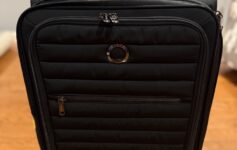
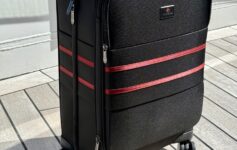

Honestly I think it’s a case of not needing to reinvent the wheel.
If they all went out of business that would be a fair suggestion, but Away seems to be doing just fine. I also think that until you get north of $600 with Tumi, it’s the same ballistic nylon bag throughout the line that is not special, maybe it is time to update the “wheel” a bit.
Frankly, I looked at all the bags with batteries “built in” and asked what happens when the battery dies? So I bought a cute Samsonite that has the USB port at the top, a cord and a pocket where I put my own power brick. Away is lovely and $100+ more than my case. Mine is cloth and smaller. But it’s an ok sized carry on with an easily removable, chargeable, non propriety power brick.
I like that concept.
Besides the charging functionality, what benefit did these “smart” cases have that you couldn’t gain from throwing a Tile tracker into your bag (as I have for years)?
Malthus – That’s a fair question. In some cases, the handle will weigh the bag, track it, and charge multiple devices. They often feature a locking mechanism built-in, some as simple as a combination, some electronically locked, smart luggage from Tumi can be programmed to feature the bag tag electronically on the bag itself, using an e-ink display. These carry-ons tend to be made with newer polymers which are lighter, feature omni-directional wheels and are in some cases more durable than traditional luggage manufacturers. If you take the Away Travel carry-on, it was prone to scrapes but would be difficult to structurally damage, is lighter than most competitors and is cheaper than their peers with similar features.